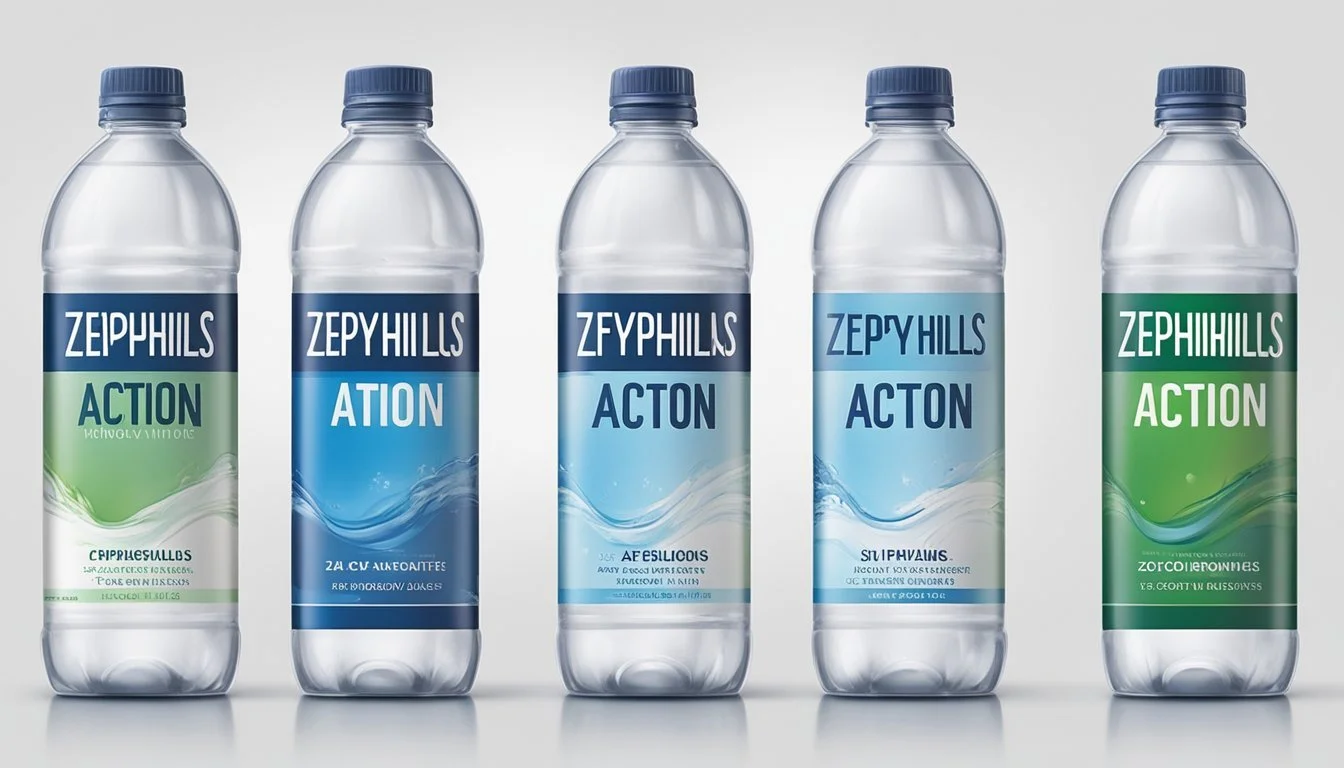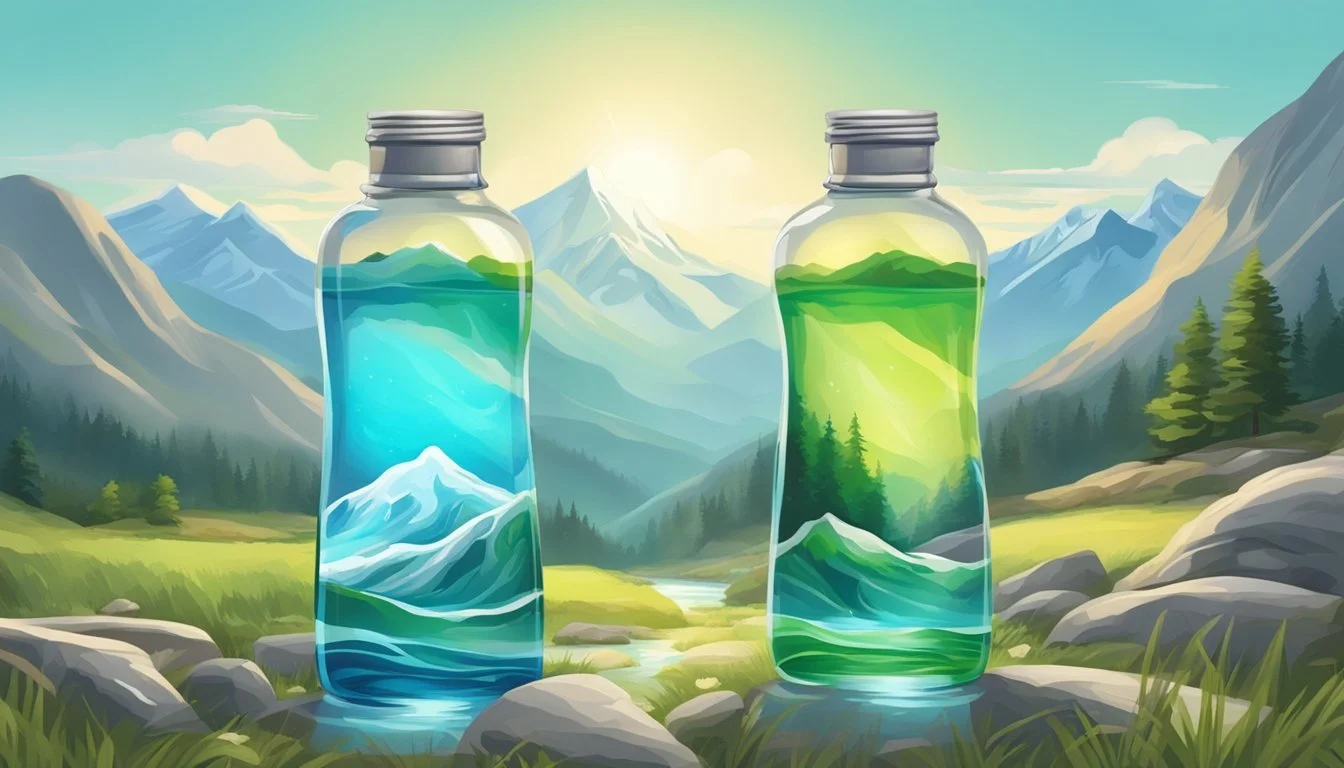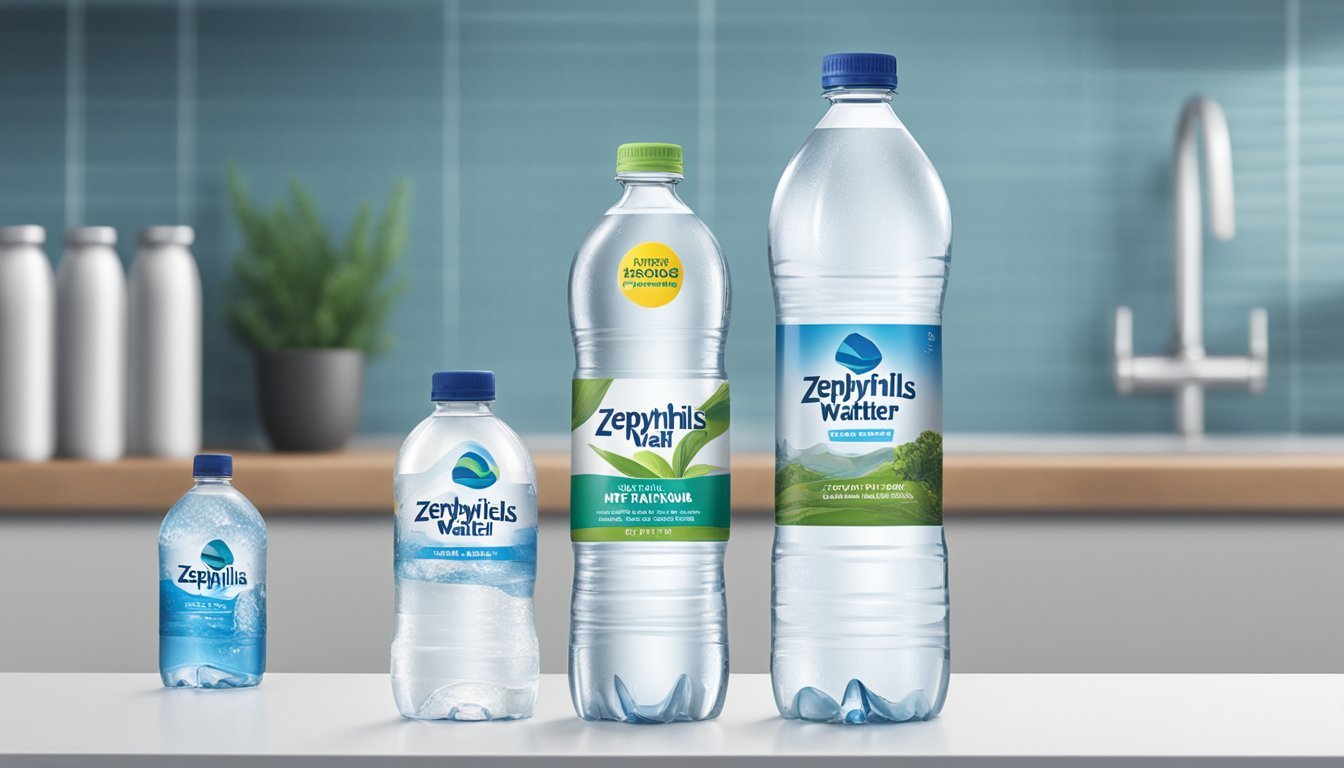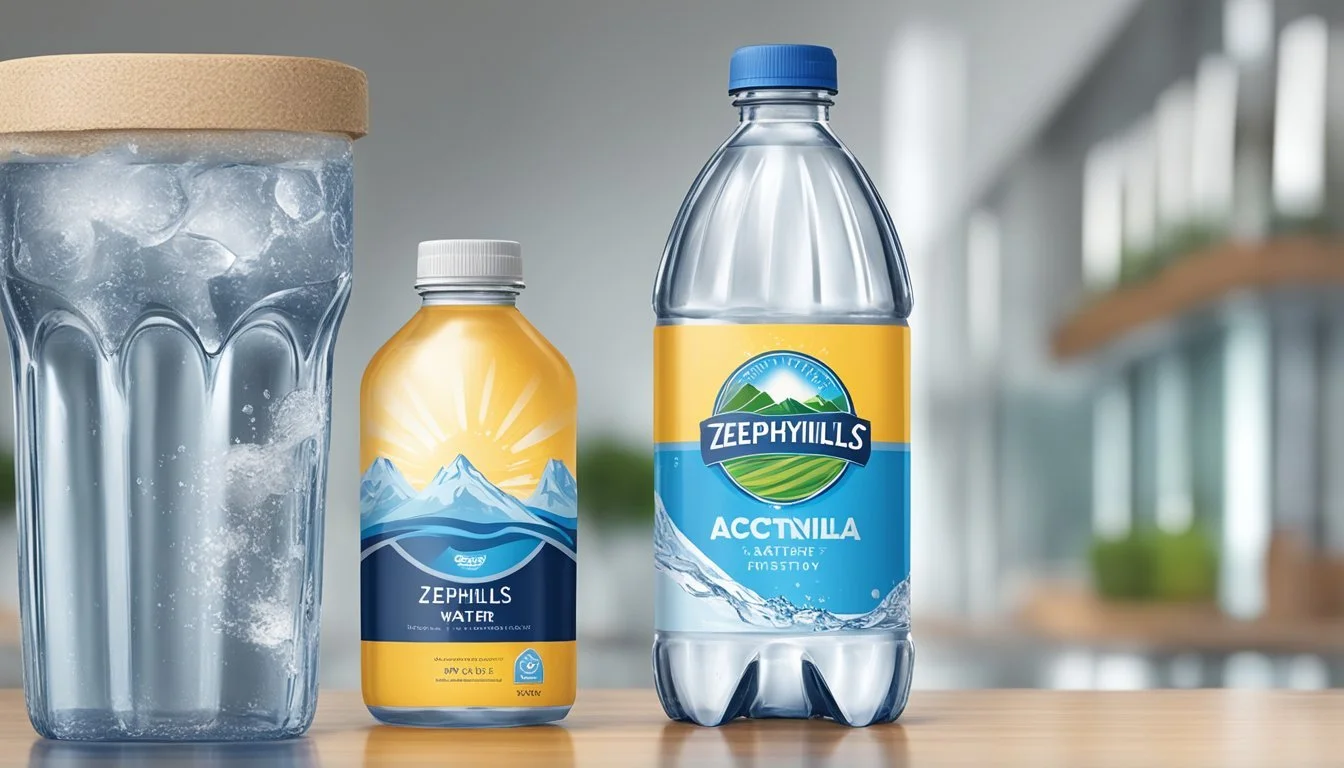Zephyrhills vs. Action
The Ultimate Bottled Water Comparison
Choosing the right bottled water can be a matter of personal preference, health considerations, and brand loyalty. Zephyrhills, a natural spring water derived from springs in Florida, is known for its clean taste and natural mineral content, including magnesium, calcium, and potassium. These minerals contribute positively to health, making Zephyrhills a popular choice among health-conscious consumers.
Action Bottled Water, in contrast, is often recognized for its competitive pricing and widespread availability. While it may not boast the same natural mineral content as Zephyrhills, its affordability makes it an appealing choice for many consumers. Those looking for a cost-effective option without compromising on safety might find Action a satisfactory option.
Ultimately, the decision between Zephyrhills and Action Bottled Water hinges on what consumers prioritize—whether it's the natural mineral benefits of Zephyrhills or the affordability and accessibility of Action. Each brand offers unique advantages that cater to different consumer needs.
The Essence of Bottled Water
Bottled water quality hinges on several factors. One major element is the source of the water. Some brands, like Zephyrhills, source their water from natural springs. Others, such as Essentia, utilize advanced purification processes.
Hydration is the primary goal. Spring water naturally contains minerals like calcium, magnesium, and potassium, which support health. Conversely, reverse osmosis methods strip water of contaminants, often requiring the re-addition of minerals to enhance taste and health benefits.
Minerals and Electrolytes
Calcium
Magnesium
Potassium
These are often present in natural spring water and are essential for body functions.
Bottled waters differ in their filtration and purification processes. Spring waters undergo filtration to remove particles but retain natural minerals. Reverse osmosis water is thoroughly purified, removing nearly all impurities, though it may need re-mineralization.
pH Levels
Essentia water boasts a higher pH due to its alkaline nature, aiming for a smooth, clean taste. Spring waters like Zephyrhills typically have a neutral pH, contributing to their pure taste.
Taste
Taste can vary widely between bottled waters. Alkaline waters, like Essentia, are often described as smooth. Spring waters can have a subtle mineral taste due to their natural content.
In the realm of bottled water, factors such as source, mineral content, and purification methods play a crucial role in determining quality and health benefits. This diversity allows consumers to choose based on their specific hydration and health needs.
Profiling Zephyrhills
Zephyrhills, a renowned bottled water brand, offers natural spring water sourced from Florida. Its purity, taste, and stringent quality assurance measures ensure consumers receive a reliable and refreshing hydration choice.
Sourcing and Purity
Zephyrhills sources its water from natural springs in Florida. These springs are known for their high quality and abundant flow. The brand focuses on maintaining the natural purity of the water throughout the bottling process.
Spring locations:
Crystal Springs
Cypress Springs
Blue Springs
The water undergoes minimal processing to preserve its natural state. This approach ensures that Zephyrhills water retains its natural minerals and purity, meeting consumers' expectations for high-quality natural spring water.
Taste and Mineral Content
Zephyrhills water is celebrated for its crisp, refreshing taste. The flavor profile is influenced by the minerals naturally present in the spring water.
Key minerals include:
Calcium
Magnesium
Sodium
These minerals not only contribute to the taste but also provide potential health benefits. The slight mineral presence offers a balanced taste that is neither too harsh nor too bland, aligning with consumer preferences for a natural, clean-tasting water.
Quality Assurance and Safety
Zephyrhills employs stringent quality assurance measures to ensure the safety and purity of their water. Each batch undergoes rigorous testing in alignment with federal and state guidelines.
Quality control steps:
Source protection - Regular monitoring of spring sites.
Filtration - Steps to remove impurities without altering the natural composition.
Testing - Frequent testing for contaminants.
Safety remains a top priority, with quality reports made available to the public to maintain transparency and trust. These reports confirm that Zephyrhills consistently meets or exceeds industry standards for bottled water safety and quality.
Understanding Action Bottled Water
Action Bottled Water is renowned for its meticulous filtration and purification processes, commitment to health and hydration, and strong focus on quality and consumer trust.
Filtration and Purification Processes
Action utilizes a state-of-the-art filtration process to ensure the highest purity levels. The water undergoes multiple stages, including carbon filtration, reverse osmosis, and UV light treatment. Carbon filtration removes organic compounds and chlorine, improving taste. Reverse osmosis eliminates dissolved solids and impurities. Finally, UV light treatment ensures no microorganisms are present. This rigorous process guarantees that the water is clean, safe, and pleasant to drink, addressing consumers' concerns about purity.
Health and Hydration Factors
Action Bottled Water is designed to enhance health and hydration. It often contains added electrolytes like sodium and potassium, which help maintain fluid balance and support nerve function. The water's pH level is carefully maintained, generally falling between 6.5 and 8.5, which is optimal for body absorption and comfort. Everyday consumption of Action water supports the body's hydration needs, catering to active lifestyles and promoting overall well-being.
Quality and Consumer Trust
Quality assurance is a cornerstone of Action's brand reputation. Each bottle undergoes strict testing for contaminants, and the company adheres to both national and international safety standards. Consumer trust is bolstered by transparent labeling, detailing mineral content and sourcing information. Action's commitment to integrity and transparency makes it a trusted choice for many households, ensuring consistent product quality and customer satisfaction.
Comparative Analysis of Water Sources
Zephyrhills and Action are two popular bottled water brands. This section covers their water sources, the differences between spring water and purified water, and their adherence to transparency and regulations.
Spring Water versus Purified Water
Spring Water: Zephyrhills sources its water from natural springs in Florida. Natural spring water, such as Zephyrhills, maintains its mineral content, which can enhance taste and health benefits. Consumers often choose spring water for its naturally occurring minerals and perceived purity.
Purified Water: Action typically sources its water from groundwater or municipal supplies and then processes it. Purified water undergoes various treatments, such as reverse osmosis, distillation, or deionization, to remove impurities and contaminants. This results in cleaner water, though it may lack the natural minerals found in spring water.
Source Transparency and Regulations
Transparency: Zephyrhills is transparent about its sources, labeling them as natural springs in Florida. This information helps consumers trust the product. On the other hand, Action provides general source locations but details the purification processes involved.
Regulations: Both Zephyrhills and Action adhere to EPA and FDA regulations for bottled water. The EPA oversees the standards for tap water, while the FDA regulates bottled water. Zephyrhills ensures its water meets spring water standards, whereas Action follows guidelines for purified water. Compliance with these regulations guarantees safety and quality for both brands.
Taste Profiles and Consumer Preferences
Bottled water preferences hinge on taste, mineral content, and pH levels. Each brand offers a unique profile that can appeal differently across various consumers' palates.
Understanding the Palate
The palate is highly sensitive to subtle variations in taste. Zephyrhills and Action bottled waters each offer distinct taste profiles. Zephyrhills’ taste is influenced by its mineral content, derived from natural springs in Florida. This gives it a clean, crisp taste appreciated by many.
Action water, known for its purity, is often described as smooth and refreshing. While some consumers might find Action’s taste slightly bland due to lower mineral presence, others prefer its neutrality. Taste preference depends largely on one’s sensitivity to these nuances.
The Role of Minerals and pH
Minerals such as calcium, magnesium, and potassium not only influence taste but are also essential for health. Zephyrhills water contains a balanced mix of these minerals, contributing to its mild, slightly sweet taste.
Action water, filtered through advanced purification processes, has fewer minerals, making it less complex but more neutral in flavor.
pH levels are another critical factor. Zephyrhills has a slightly alkaline pH, often around 7.5, enhancing its refreshing quality. Action water maintains a balanced pH, close to neutral, providing consistency in taste. Preferences can vary; those seeking a more pronounced mineral taste might prefer Zephyrhills, while those who favor purity might opt for Action.
Health Implications and Benefits
Choosing between Zephyrhills and Action bottled water hinges on how each brand impacts health, focusing on hydration properties and potential contaminant risks.
Hydration and Electrolytes
Proper hydration is essential for overall health, and both Zephyrhills and Action offer hydration benefits. Zephyrhills is sourced from natural springs and contains naturally occurring minerals like calcium, magnesium, and potassium. These electrolytes are crucial for maintaining fluid balance and aiding nerve signal transmission.
Action water, on the other hand, typically markets itself as containing added electrolytes. This enhancement aims to improve taste and provide additional hydration benefits. Electrolytes such as sodium and potassium can help replenish the body, especially after intense physical activities.
Brand Electrolytes Source Type Zephyrhills Natural minerals Natural springs Action Added electrolytes Varied sources
Contaminants and Safety Concerns
Contaminant levels are a significant factor in assessing bottled water safety. Zephyrhills water undergoes a multi-step purification process that reduces potential contaminants. Its natural spring origin generally provides a cleaner base, but it still faces scrutiny for pollutants like heavy metals, PFAS chemicals, and arsenic.
Action water also promises stringent purification measures. Yet, both brands must consistently meet FDA standards to ensure safety. Checking independent testing results for lead, heavy metals, and other harmful substances can offer consumers peace of mind. Regular consumption of bottled water free from these contaminants promotes better health outcomes.
Brand Purification Process Major Contaminants Monitored Zephyrhills Multi-step purification Heavy metals, PFAS, arsenic Action Stringent purification Lead, heavy metals, PFAS
Sustainability and Environmental Impact
Sustainability and environmental impact are paramount concerns when comparing bottled water brands. Evaluating the eco-friendliness of Zephyrhills and Action requires a look at their production practices, packaging materials, and environmental policies.
Bottled Water Brands and Eco-friendliness
Zephyrhills sources its water from Florida springs and employs a purification process including micro-filtration and ozone disinfection. Despite these efforts, the use of plastic bottles raises environmental concerns. Plastic waste contributes to pollution and long-term environmental damage.
In contrast, brands like Boxed Water adopt paper-based packaging. This approach minimizes plastic use and advocates for recyclable options. Nestlé, with brands like Arrowhead and Thin Ice, claims to implement sustainable practices in sourcing and bottle manufacturing. However, the widespread use of plastic remains a significant issue that challenges their eco-friendly claims.
Icelandic Glacial positions itself as a carbon-neutral brand. Its packaging is made from 100% recyclable materials, emphasizing the reduction of carbon footprint. The brand also uses renewable energy, which further enhances its sustainability profile.
Alternatives to Plastic Bottled Water
Innovative solutions to reduce plastic dependency are gaining traction. Boxed Water uses 74% paper-based recyclable packaging. This model significantly lowers the environmental footprint. Icelandic Glacial promotes the use of glass bottles, which are reusable and eco-friendly.
Coca-Cola and Nestlé are exploring biodegradable plastics and plant-based bottles. These alternatives aim to lower the environmental impact. Plastic-free options from small startups are also emerging, providing consumers with greener choices.
Reusable water bottles present a viable alternative for day-to-day use. Stainless steel and glass bottles offer durability and reduce single-use plastic waste. Encouraging the use of refill stations can further support this sustainable practice.
Industry Oversight and Certification
Bottled water like Zephyrhills and Action undergoes strict regulation and certification to ensure quality and safety. These processes involve a mix of international and domestic regulations, alongside certification bodies that establish and enforce standards.
International and Domestic Regulation
Bottled water quality is governed by regulations from entities such as the FDA and EPA in the United States. The FDA ensures bottled water meets specific safety standards, while the EPA regulates tap water under the Safe Drinking Water Act.
Internationally, standards are maintained through guidelines set by bodies like the World Health Organization (WHO) and Codex Alimentarius. Compliance with these regulations ensures that bottled water is safe for consumption globally.
Certification Bodies and Quality Standards
The International Bottled Water Association (IBWA) plays a crucial role in certifying bottled water brands. They set stringent standards for production, packaging, and quality. Membership in the IBWA signifies adherence to high-quality benchmarks.
Quality assurance is also reinforced through regular inspection and certification, often encompassing parameters like purity, mineral content, and pH levels. Certifications from organizations such as the National Sanitation Foundation (NSF) further validate the consistency and safety of bottled water products.
Regulatory and certification measures collectively ensure that bottled water, including brands like Zephyrhills and Action, remains a reliable choice for consumers.
Final Thoughts on Bottle Water Choices
When it comes to bottled water, Zephyrhills and Action offer distinct qualities that cater to different preferences. Zephyrhills sources its water from Florida springs, emphasizing natural purity and mineral content. In contrast, Action may focus on enhanced purification processes for a clean and crisp taste.
Consumer choice plays a crucial role in determining which brand to select. Many consumers consider factors such as taste, health benefits, and environmental impact. Zephyrhills prides itself on its natural spring water with naturally occurring minerals, while Action might be designed to provide consistent quality through advanced purification.
Environmental considerations are increasingly important to many consumers. Zephyrhills and Action may differ in their bottling practices and packaging materials. Consumers concerned with sustainability might prefer brands that offer eco-friendly packaging and responsible water sourcing.
Here's a quick comparison based on available features:
Feature Zephyrhills Action Source Natural Springs Purified Mineral Content Naturally occurring Possibly added Purification Micro-filtration, UV, etc. Advanced purification Environmental Impact Eco-friendly practices Variable
The bottom line is that both Zephyrhills and Action provide quality bottled water options. The best choice depends on individual preferences and priorities, such as taste and environmental conscience.
In making a final decision, consumers should weigh these aspects carefully to choose the bottled water that best aligns with their values and needs.
More About Zephyrhills
Core Hydration vs Zephyrhills: Which Bottled Water is Better?
Icelandic Glacial vs Zephyrhills: Which Bottled Water is Better?
Mountain Valley Spring Water vs Zephyrhills: Which Bottled Water is Better?
Nestle Pure Life vs Zephyrhills: Which Bottled Water is Better?
Poland Spring vs Zephyrhills: Which Bottled Water is Better?
San Pellegrino vs Zephyrhills: Which Bottled Water is Better?
Zephyrhills vs Aqua Carpatica: Which Bottled Water is Better?
Zephyrhills vs Cascade Mountain: Which Bottled Water is Better?
Zephyrhills vs Crystal Geyser: Which Bottled Water is Better?
Zephyrhills vs Hawaii Volcanic: Which Bottled Water is Better?
Zephyrhills vs Hawaiian Springs: Which Bottled Water is Better?
Zephyrhills vs Kirkland Signature: Which Bottled Water is Better?
Zephyrhills vs Purely Sedona: Which Bottled Water is Better?
Zephyrhills vs Richard's Rainwater: Which Bottled Water is Better?
Zephyrhills vs Solan de Cabras: Which Bottled Water is Better?
Zephyrhills vs Talking Rain AQA: Which Bottled Water is Better?
Zephyrhills vs Whole Foods 365: Which Bottled Water is Better?
Zephyrhills vs Whole Foods Italian Still Mineral water: Which Bottled Water is Better?








